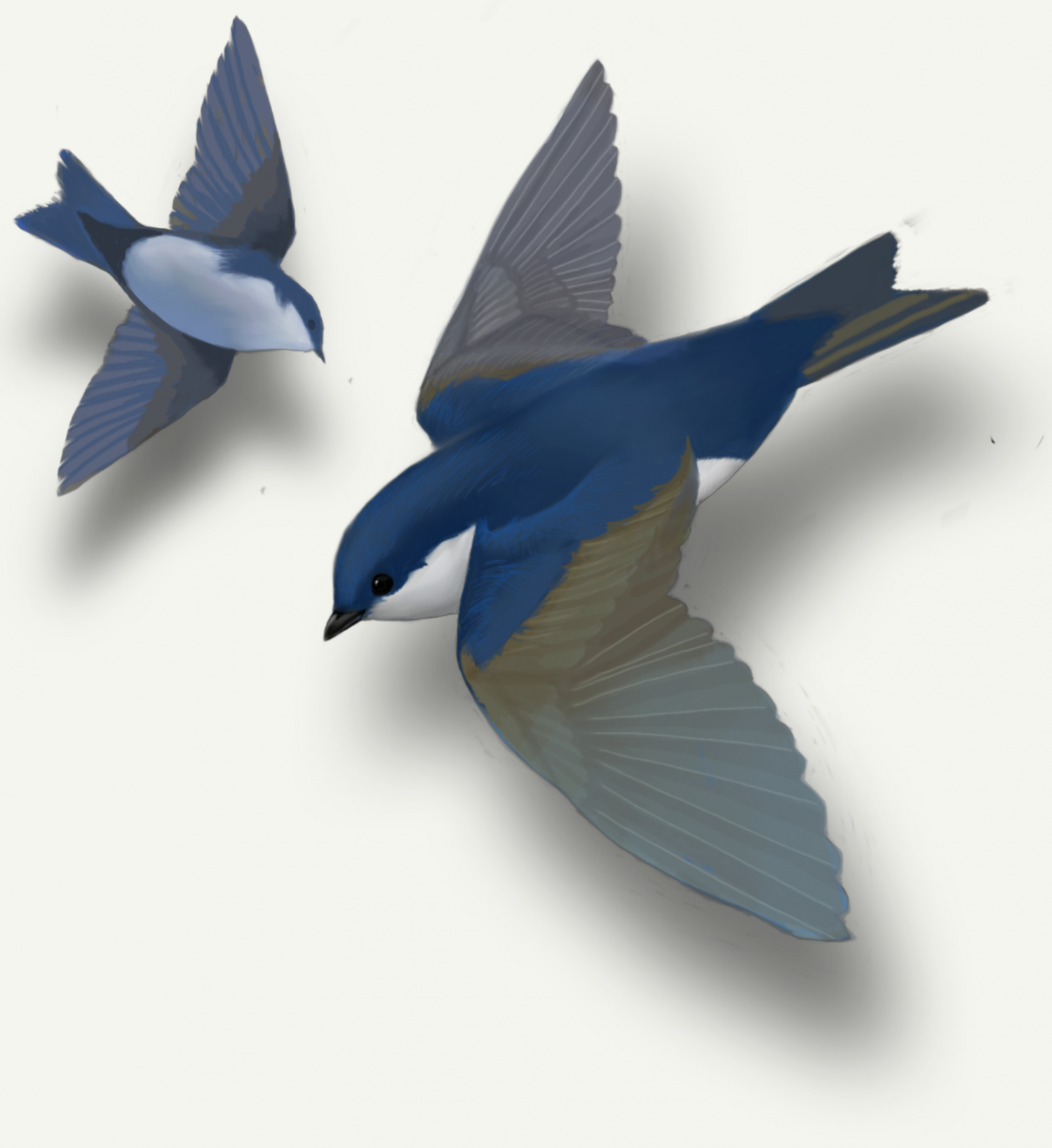
Here’s a little description of producing and editing the paintings featured in this project. Keep in mind the other elements such as maps and descriptions require similar efforts but this essay is highlighting the paintings.
There are a few misconceptions about our process which often needs clearing up. Many people are familiar with the “fun” apps where one can tap a button or slider and convert a photo into an oil painting or watercolour.
Playing with sliders and button couldn’t be further from the truth so I often find myself compelled to clarify that these paintings don’t start from a photograph.
Field work begins the critical path
It’s not always possible but ideally seeing that bird in the field before I start drawing is best. My visual memory is relatively well developed and I only need to glimpse it once. Its shape, bulk, line and gesture are basically copied to disk at that point. From that encounter the visual imprint has occurred that tells the story about that species.The painting is now a drawing living in my head. Often, thanks to being in the field the light source and the scene itself already exists there as well. Nevertheless things are flexible at this point so as the painting progresses it sometimes leads me down a entirely new path which is fine.
Absolute painting requirements
What is immutable is the requirements of the painting. If Noel deems that we need a female or adolescent or a particular plant, insect or location he’ll indicate that. Occasionally he’ll suggest a pose the bird is usually seen in, tail cocked up or head down.
Initial sketching
I’ll sketch while rummaging around my visual memory till I get shape, pose and gesture the way I want it. This happens pretty quickly as there is very little self editing or censuring going on at this stage. I’ll then start working on details. The glaring mistakes or inconsistencies will often start to reveal themselves around this time. Eventually I’ll start bumping up against the limits of my memory and knowledge of that bird species.
For example, in a painting the birds red breast may start too high up on its chest. Or the buff colour is leaning too much to the yellowish side or the beak is too long. I might not quite see all that clearly yet but somehow know something is off. This is when I’ll start my survey of photographs, beginning initially with Noel’s or mine and failing that online resources.
Photographic survey
I call it a survey because of the sheer number of photographs perused. Looking at these photographs at this stage doesn’t mean I’m looking at ways to make the painting more real. Instead I’m trying to average plumage and shape variation across a large set of individuals. Because of this task its fairly easy to resist relying on that one sample photo for the placement of that red breast mentioned earlier. Any single photograph will show a bird who is obviously a card carrying member of that species. The problem lies in whether it is a good representative of that species. Huge variations in plumage can exist and finding an average is the correct thing to do here.
Photographic tyrany
Getting the shape, pose and scene established before even looking at any photos also frees one from what I call the false tyranny of the photograph. Its sometimes hard to resist the authority of the photo, after all its “real” right? It’s very seductive to unconsciously start “copying” what you see in that shot and that approach may not be in the best interests of accuracy.
So yes, photographs are utilized but they are treated with suspicion and are relegated to simple comparison tools, only being brought in later in the process where they can do the least damage.
Enter the collaborative part
When I’ve narrowed down things to a fine grained level of detail I fire off a jpeg to Noel for his input.
This is where we start collaborating in a meaningful way. We can’t always be in the same room for this step. Which means it takes more time and is a bit more awkward but we soldier on anyway. Certainly its much more interesting and invigorating to be able to edit in the same room but not always possible.
He’ll stare at it in Procreate and scribble notes over the painting describing what needs correcting in the name of accuracy. If that is the case then he sends the jpeg with the scribbles to me. I will make those changes and send him the latest version. If all is good then we sign off. If not then rinse and repeat till we can sign off. This cycle has been known to occur many times before sign off.
It’s not unheard off for one of us to ask if we can reopen work on a signed off painting. Sometimes a signed off painting will over time reveal something thats off will intrude into our consciousness until it demands addressing. We might not know the solution is yet but we’ll always bring it up and find a fix.
Is everyone happy?
Next up. After Noel and I have sorted a painting Carey will look at the description part of Noel’s text. Comparing that description to the painting sometimes calls for adjustments to the text or painting depending on which is more accurate.
At that point hopefully we are all happy.
So there you have it. It’s a complex process from start to finish. Starting of course with being out in the field observing.
Bryan
*I’ve only done one painting from one of my own photographs and I have another from one of Noels photographs. I didn’t enjoy either as I really had no say in the pose along with a host of other considerations. Lets just say if I had to work that way I wouldn’t.

